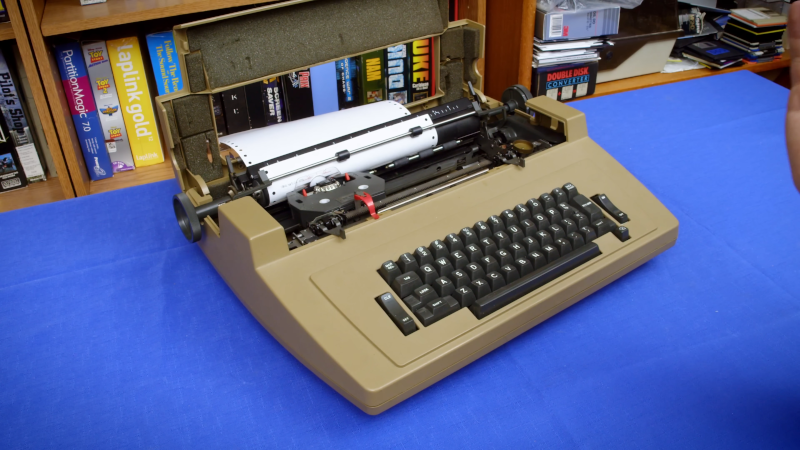If you learned to type anytime in the mid-part of the 20th century, you probably either had or wanted an IBM Selectric. These were workhorses and changed typing by moving from typebars to a replaceable element. They were expensive, though worth it since many of them still work (including mine). But few of us could afford the $1,000 or more that these machines cost back in the day, especially when you consider that $1,000 was enough to buy a nice car for most of that time. [Tech Tangents] looks at something different: a clone Selectric from the sewing machine and printer company Juki.
The typewriter was the brainchild of [Thomas O’Reilly]. He sold typewriters and knew that a $500 compatible machine would sell. He took the prototype to Juki, which was manufacturing typewriters for Olivetti at the time.
Although other typewriters used typeballs, none of them were actual clones and didn’t take IBM typeballs. Juki even made their own typeballs. You’d think IBM might have been upset, but they were already moving towards the “wheelwriter,” which used a daisywheel element. Juki would later make a Xerox-compatible daisywheel printer, again at a fraction of the cost of the original.
Even the Juki manual was essentially a rip-off of the IBM Selectric manual. Sincerest form of flattery, indeed. It did appear that the ribbon was not a standard IBM cartridge. That makes them hard to find compared to Selectric ribbons, but they are nice since they have correction tape built in. The video mentions that you can find them on eBay and similar sites.
There were a few other cost savings. First, the Juki was narrower than most Selectrics. It also had a plastic case, although if you have ever had to carry a Selectric up a few flights of stairs, you might consider that a feature.
The Juki in the video doesn’t quite work, but it is a quirky machine with an odd history. Today, you can print your own typeballs. We wonder if these would be amenable to computer control like the Selectrics?
















“by moving from typebars to a replaceable wheel”. Ball. I think you meant to write ball. the wheels were slower but way cheaper to make. moving from the mechanical realm to the electronical one.
Yah, I’m not sure what misfiring of neurons caused that. I talk about ball vs wheel later and I have about 8 balls not a meter away from my desk… fixed.
The Selectric typewriters used a small induction motor. The typewriters would sort of quietly “howl” at a frequency set by the rotational speed of the motor. Sort of a low “whooooooooooo” the whole time they were on. The rotation speed of such motors is locked to the AC frequency.
In the early 1990s, I was in the US Air Force. Our secretary used a computer (PC,) but we also had some Selectrics around.
On days when the base maintenance guys were testing the emergency generators, we weren’t allowed to use the PCs – they were afraid that a misbehaving generator would fry the expensive PCs.
On such days, our secretary would use one of the Selectrics to type up stuff that couldn’t wait.
The howling Selectric made it obvious that the AC frequency from the emergency generators was not especially stable. Instead of a constant “whoooooooo” from the Selectric, you heard a wandering “whooOOoooooOOOOOoo” where the volume and the tone changed constantly with the varying AC frequency of the generator.
$1000 for a typewriter…
But quality tools cost real money back then.
Remember how much oscilloscopes cost?!
For those of you who wished he showed the internals in this video, turns out he did a repair livestream several months ago. The construction is quite interesting; if you know what’s the inside a Selectric looks like, it’s like they took everything from the bottom of the machine and stuffed it into one side.
https://www.youtube.com/watch?v=mQxkEHUm5Sw